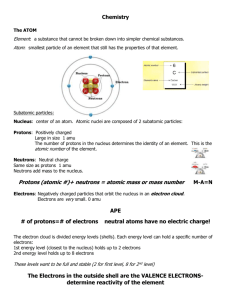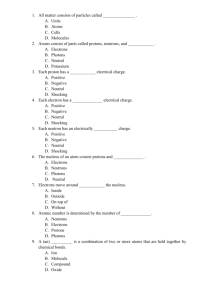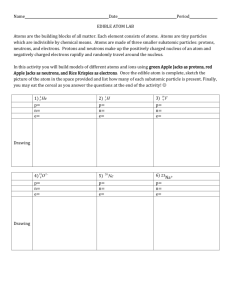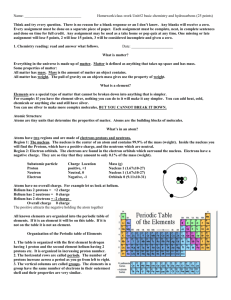Biology Review For Test 1
advertisement
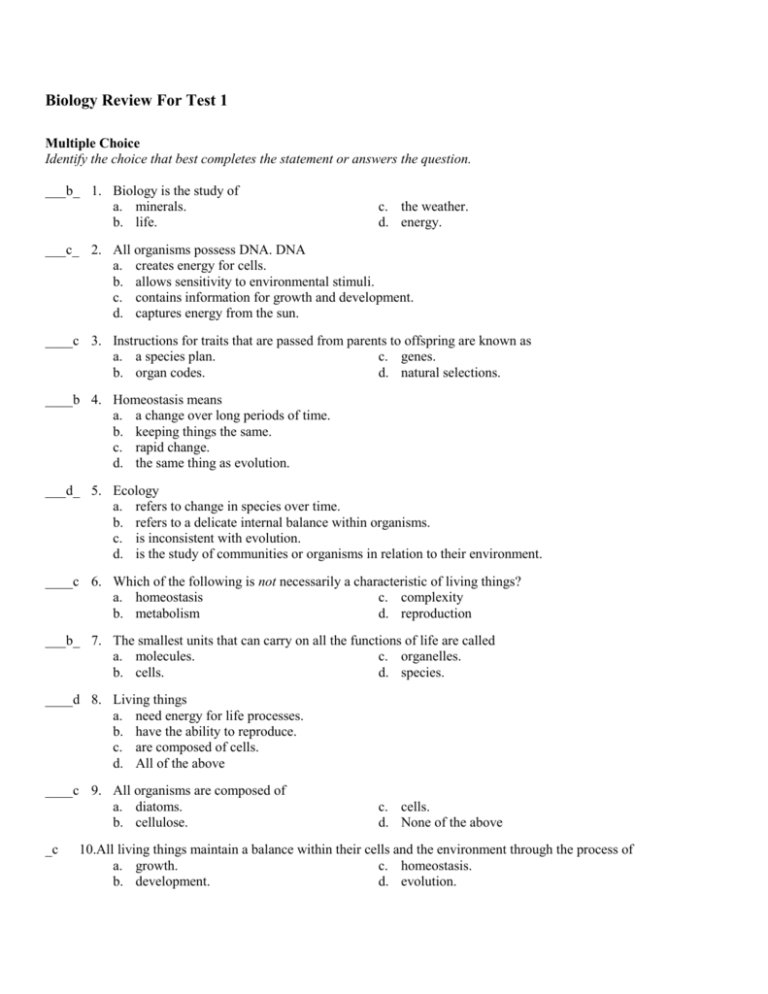
Biology Review For Test 1 Multiple Choice Identify the choice that best completes the statement or answers the question. ___b_ 1. Biology is the study of a. minerals. b. life. c. the weather. d. energy. ___c_ 2. All organisms possess DNA. DNA a. creates energy for cells. b. allows sensitivity to environmental stimuli. c. contains information for growth and development. d. captures energy from the sun. ____c 3. Instructions for traits that are passed from parents to offspring are known as a. a species plan. c. genes. b. organ codes. d. natural selections. ____b 4. Homeostasis means a. a change over long periods of time. b. keeping things the same. c. rapid change. d. the same thing as evolution. ___d_ 5. Ecology a. refers to change in species over time. b. refers to a delicate internal balance within organisms. c. is inconsistent with evolution. d. is the study of communities or organisms in relation to their environment. ____c 6. Which of the following is not necessarily a characteristic of living things? a. homeostasis c. complexity b. metabolism d. reproduction ___b_ 7. The smallest units that can carry on all the functions of life are called a. molecules. c. organelles. b. cells. d. species. ____d 8. Living things a. need energy for life processes. b. have the ability to reproduce. c. are composed of cells. d. All of the above ____c 9. All organisms are composed of a. diatoms. b. cellulose. _c c. cells. d. None of the above 10.All living things maintain a balance within their cells and the environment through the process of a. growth. c. homeostasis. b. development. d. evolution. _d___11.Atoms are composed of a. protons with a positive charge. b. neutrons with no charge. c. electrons with a negative charge. d. All of the above _c___ 12. The smallest particle of carbon that can retain the chemical properties of carbon is a. a carbon molecule. b. a carbon macromolecule. c. a carbon atom. d. the nucleus of a carbon atom. ___c_ 13. A substance that is composed of only one type of atom is called a(n) a. nucleus. c. element. b. cell. d. molecule. ___c_ 14. All matter in the universe is composed of a. cells. b. molecules. c. atoms. d. carbon. ___b_ 15. The electrons of an atom a. are found in the nucleus along with the protons. b. orbit the nucleus in various energy levels. c. have a positive charge. d. are attracted to the positive charge of neutrons. __c__ 16. Atoms that have gained energy a. have protons and neutrons that move farther apart. b. lose neutrons from the nucleus. c. have electrons that move to higher energy levels. d. absorb electrons into the nucleus. __a__ 17. Which of the following states of matter contain(s) particles that are tightly linked together in a definite shape? a. solid c. gas b. liquid d. solid and liquid _c___ 18. Because carbon has four electrons in its outer energy level, a. it can form bonds with carbon atoms only. b. these atoms are naturally chemically stable. c. it can react with up to four other atoms to form covalent bonds. d. it cannot react with anything other than organic molecules. __c__ 19. The bond formed when two atoms share a pair of electrons is called a a. hydrogen bond. c. covalent bond. b. nonpolar bond. d. water bond. __b__ 20. Sharing of electrons between atoms of two or more elements a. results in the formation of an ion. b. results in the formation of a compound. c. results in the formation of noble gases. d. results in destabilization of the atoms involved.




